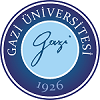The male Siamese twins came into the world with caesarean section by the help of Prof. Dr. Merih Bayram who is one of the prominent professors at the Faculty of Medicine. The infants who are healthy but premature were taken to baby incubator.
Prof. Dr. Canan Türkyılmaz and Assoc. Dr. İbrahim Hirfanoğlu participated in the operation which was the first one in the history of our hospital.
Besides, specialist M. Aykut Özek, specialist Pınar Çalış, specialist Halis Özdemir, anesthetist Prof. Dr. Berrin Günaydın and Prof. Dr. Ebru Ergenekon and specialist Başak Gürsoy from the department of Pediatric Health and Illnesses took part in the surgery.
Prof. Dr. Merih Bayram stated that the cesarean birth was successful and the health of babies was good. She said "I am participating in the birth of Siamese twins for the first time in my professional career. Such births rarely happen in the world anyway. Babies are joined by chest and abdomen, the only organ they share is the liver, and all the other organs look double. After the detailed examination and testing of the babies, we will determine how to seperate them."
Bayram said that because of the ongoing pain of the patient, they had taken the birth before the scheduled enrollment. She stated that they needed time for the surgical separation as the twins were premature. Bayram also added that there was no obstacle for that surgery and the operation would probably take place within 1 or 2 months at Gazi University Health Research and Application Center.
Bayram told that the births of conjoined twins were rare and this kind of birth occured once every 140,000 live births, She also stated that the babies weighted 4 kilograms and 70 grams and they were 34 weeks old infants when they came to the world.
It was announced that the patient, Necla Akbulut, who came to our university from Diyarbakır State Hospital, was healthy after the operation and she gave birth 9th times and 4 of these births had been realized with caesarean section.
03.02.2017 / Consultancy of Press and Public Relations
Great Success in 2024 QS European Universities Ranking
Pakistan FICS 2023 – Gazi University's Great Success
Gazi University Department of Architecture Students’ Success
Gazi University Shanghai Ranking Continues Its Successful Performance in 2023 ARWU
